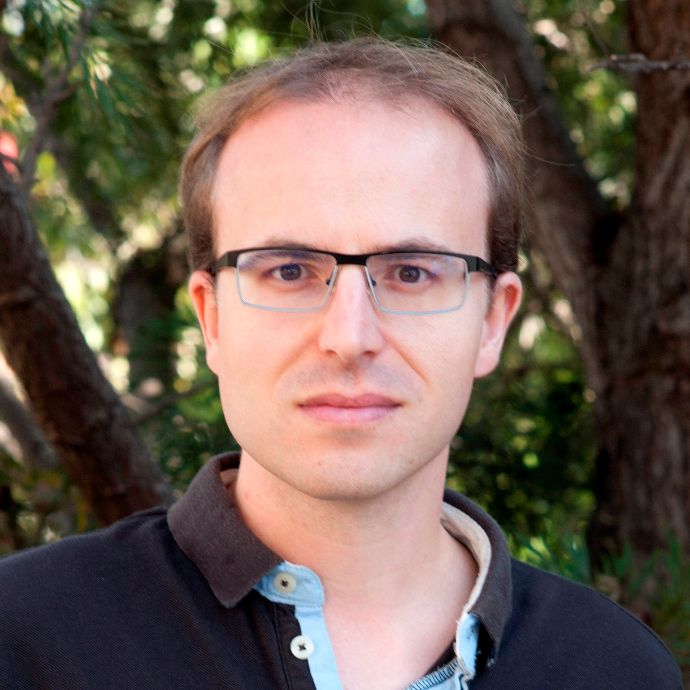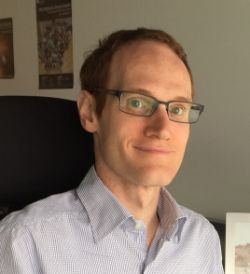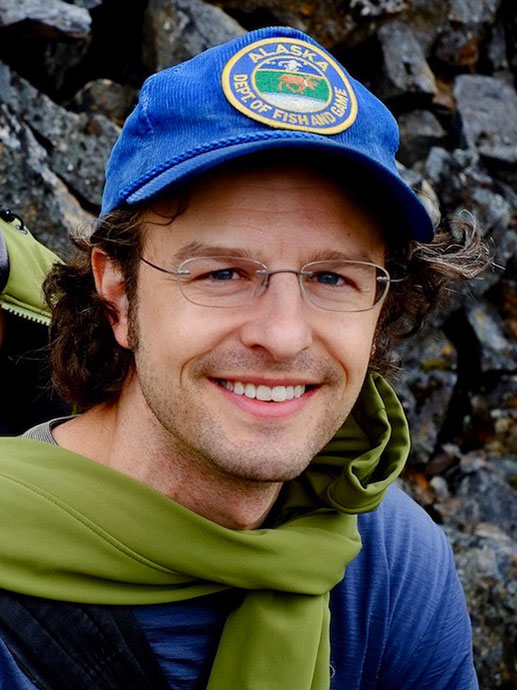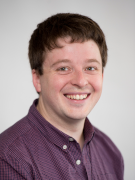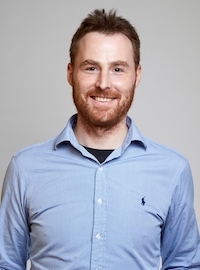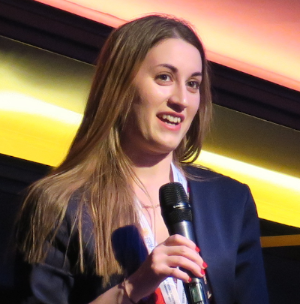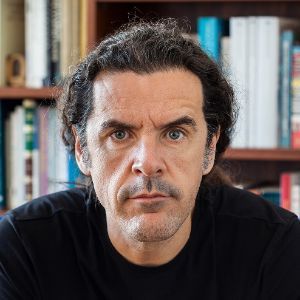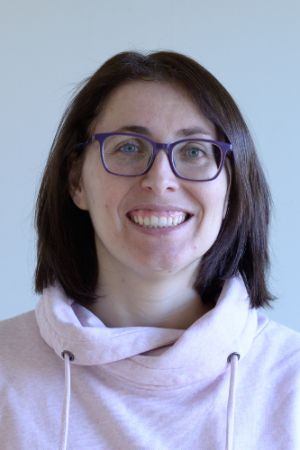Tidlegare gjesteforelesninger og seminarer - Side 21
By Simen Sandve from the Norwegian University of Life Sciences (NMBU)
Abstract: Magmatic intrusions into the earth's crust lead to geological formations such as sills, laccholites and volcanoes. The conventional approach is to threat the intrusive fluid as Newtonian and viscous, while the host-rock is assumed to behave purely elastic. However, Magma is known to have non-Newtonian properties. In addition, field studies indicate that visco-elastic deformation of the host rock is an important effect in the propagating fracturing. We thus want to investigate the effect of introducing a yield-stress fluid in the intrusion process. We perform an experiment based on the elasto-hydro-dynamical approach, but where we change the injected fluid from a viscous (glycerol) to a yield-stress fluid (carbopol). We are interested in seeing how this potentially can change the dynamics of the intrusion compared with the viscous case.
This talk is part of the Mechanics Lunch Seminar series. That means 20min talks plus discussion in an informal setting.
Zoom: To obtain the Zoom meeting details please contact Timo Koch (timokoch at math.uio.no).
Tobías Felipe, Instituto de Astrofisica de Canarias (Spain).
Michele Fumagalli, Physics Department, University of Milano Bicocca.
By Michael Knapp from University of Otago, New zealand. Please be aware of the change in time.
C*-algebra seminar talk by Magnus Goffeng
By Eline Lorenzen from University of Copenhagen, Denmark.
Abstract: In computational mechanics, high fidelity simulations of a parameterized partial differential equation (PDE) are often computational expensive, which make them impractical for real-time predictions. Non-intrusive reduced order modelling aims to address this problem with a fast low rank approximation. This is usually done in two phases: the model is built in the offline phase and the prediction is done in the online phase. In the offline phase, data points, or so-called snapshots, are collected from simulations or measurements. The reduced basis space can then be obtained from the dataset using Proper Orthogonal Decomposition. In the online phase, the solution for a new set of parameters is obtained by first recovering the expansion coefficients for the reduced basis and then projecting them back into the uncompressed real-life space. The non-intrusive approach relies on a statistical mapping between the coefficients and the parameters. Various methods have been proposed to do so, this seminar will discuss radial basis function interpolations and dynamic mode decompositions.
This talk is part of the Mechanics Lunch Seminar series. That means 20min talks plus discussion in an informal setting.
Zoom: To obtain the Zoom meeting details please contact Timo Koch (timokoch at math.uio.no).
C*-algebra seminar talk by Ulrich Pennig
Abstract: Graphics processing units, or GPUs, offer significantly increased performance for some scientific computing workloads. But in the case of finite element simulations on unstructured meshes, the benefits of using GPUs are still the subject of an ongoing discussion for which there is no clear conclusion. We describe our work on improving the GPU acceleration of a finite element solver framework called FEniCS, where code is automatically generated for the user from a high-level description of their finite element problem. We use automated code generation to offload the assembly of linear systems to a GPU, while taking care that data transfers between CPU and GPU do not become a performance bottleneck. We provide examples to show that GPUs and automated code generation can be used to accelerate finite element solvers. Even though more work is needed to find efficient GPU-based linear solvers, our improvements to FEniCS can be used as a starting point for exploring the potential of GPU acceleration for finite element simulations.
This talk is part of the Mechanics Lunch Seminar series. That means 20min talks plus discussion in an informal setting.
Zoom: To obtain the Zoom meeting details please contact Timo Koch (timokoch at math.uio.no).
Mingle meeting at ITA with updates and quiz.
C*-algebra seminar talk by Rufus Willett
Benjamin Racine, the Marseille Particle Physics Centre (CPPM).
By Colin Olito from Lund University, Sweden.
Phil Bull, Queen Mary University of London
Abstract:Due to their large mass and small aspect ratio, icebergs pose a threat to boats and offshore structures. Small icebergs and bergy bits can cause harm to platform hulls and are more difficult to discover remotely. When there is a risk of collision between icebergs and platforms, it is necessary to deflect its drifting course to ensure safe human operations in polar offshore regions. In this talk, I will present iceberg towing experiments carried out on Svalbard in September 2020...
This talk is part of the Mechanics Lunch Seminar series. That means 20min talks plus discussion in an informal setting.
Zoom: To obtain the Zoom meeting details please contact Timo Koch (timokoch at math.uio.no).
Florian Beutler, Institute for Astronomy at the University of Edinburgh.
Abstract: We report on the observation of gravity-capillary wave turbulence on the surface of a fluid in a high-gravity environment. By using a large-diameter centrifuge, the effective gravity acceleration is tuned up to 20 times Earth’s gravity. The transition frequency between the gravity and capillary regimes is thus increased up to one decade as predicted theoretically. A frequency power-law wave spectrum is observed in each regime and is found to be independent of the gravity level and of the wave steepness. While the timescale separation required by weak turbulence is well verified experimentally regardless of the gravity level, the nonlinear and dissipation timescales are found to be independent of the scale, as a result of the finite size effects of the system (large-scale container modes) that are not taken currently into account theoretically.
This talk is part of the Mechanics Lunch Seminar series. That means 20min talks plus discussion in an informal setting.
Zoom: To obtain the Zoom meeting details please contact Timo Koch (timokoch at math.uio.no).
Natasha Jeffrey, Northumbria University.
By Michael Matschiner from the Natural History Museum, University of Oslo
Vitor Cardoso, professor at Center for astrophysics and gravitation (CENTRA/IST), Lisbon (PT).
Abstract: I will present a Biot-Stokes formulation created by Ricardo Ruiz-Baier. The formulations consists of a fluid-structure interaction model for flow of a Newtonian fluid, coupled with Biot consolidation equations through an interface, and incorporates total pressure as an unknown in the poroelastic region. I will also present a preconditioner for this system which is robust in all parameters and apply the model to a third circulation process to show the velocity fields in the brains subarachnoid space.
This talk is part of the Mechanics Lunch Seminar series. That means 20min talks plus discussion in an informal setting.
Zoom: To obtain the Zoom meeting details please contact Timo Koch (timokoch at math.uio.no).
Ana Belén Grinon Marin, Institutt for teoretisk astrofysikk (ITA).
C*-algebra seminar talk by Bram Mesland (Leiden)
By Alexander Eiler from the Section for Aquatic Biology and Toxicology, Department of Biosciences, University of Oslo
